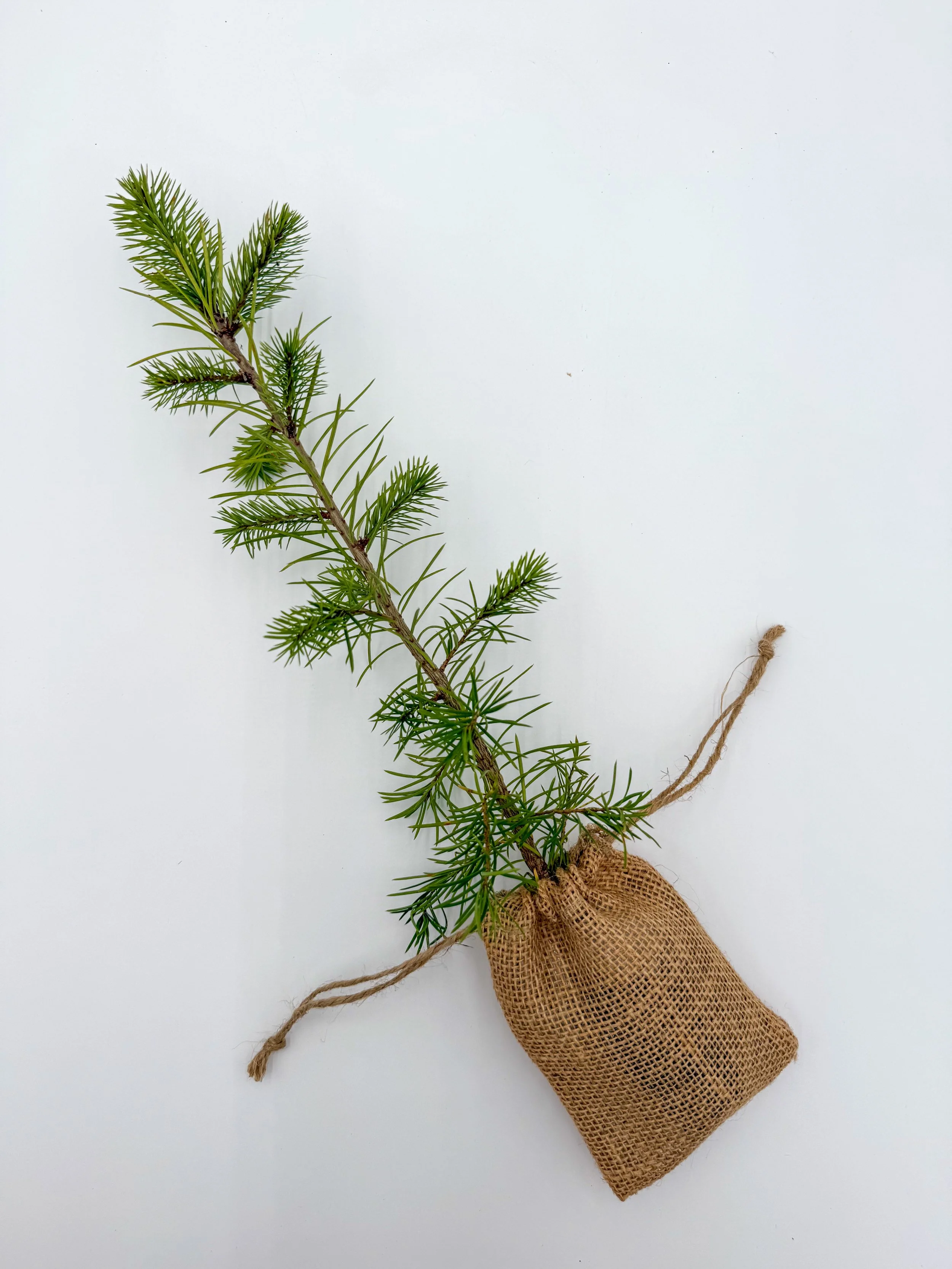The trees we grow
Little Saps offers nearly a dozen evergreen varieties, each chosen for beauty, hardiness, and ease of care. We select the right tree based on your recipient’s region so it thrives where it’s planted.
-
American Arborvitae
Thujia occidentalis
Zones 2-8
Used in early canoes and medicines, arborvitae means “tree of life.” The American arborvitae or white cedar is a versatile tree with a natural narrow, pyramid shape that is low-maintenance, but responds well to shaping. It grows to a height of 40-60’ and a spread of 10-15’. Grows slow to medium in a variety of soil types. Prefers full sun. It bronzes (turns brown) in the winter, but will green up again in the spring.
-
Arizona Cypress
Cupressus arizonica
Zones 7-9
The Arizona cypress is a North American tree native to the southwestern United States and Mexico. It grows in a pyramidal shape at a medium rate to a height of 40–50' and a spread of 25–30' at maturity. Does well in acidic, alkaline, loamy, sandy and well-drained soils. It has normal moisture requirements but displays good drought tolerance. Prefers full sun. Works well as an ornamental tree.
-

Canadian Hemlock
Tsuga canadensis
Zones 3-8
The Canadian hemlock features soft, feathery green needles. It can be sheared to any height and shape but grows naturally to a height of 40-70’ and a spread of 25-35’. It prefers full sun to light shade. It does not like heavy soils, wind, or drought. Great for screenings and foundation plantings, this variety also provides seeds that are eaten by several bird species. Grows slow to medium.
-
Colorado Blue Spruce
Picea pungens
Zones 2-7
Native to the Rocky Mountains, the Colorado blue spruce has silvery blue-green needles and great form. It is highly adaptable, a popular landscape and Christmas tree, and can grow 50' to 75' high with a 20' spread. It prefers full to partial sun. It can tolerate a wide range of soils but prefers well-drained soil with no standing water. Grows slow to medium.
-

Deodar Cedar
Cedrus deodara
Zone 6-9
Considered by some the “most graceful cedar,” the Deodar or Himalayan cedar has elegant, pendulous branches and attractive coloring. Great for landscapes, it secretes oil that deters insects. It grows in a variety of well-drained soil types. It prefers full sun and needs to be shielded from strong winds. Grows at a medium rate to a height of 40-70’ and a spread of 20’-40’.
-

Douglas Fir
Pseudotsuga menziesii
Zones 4-8
Native to western North America, Douglas fir has been described as one of the noblest forest trees. It is naturally graceful and makes a popular Christmas tree due to soft needles and beautiful color. It is also popular with songbirds and other small animals. Prefers full sun or partial shade in hot climates and well-drained soil. Medium growth rate to a height of 40-70’ and spread of 12-20’.
-
Eastern Red Cedar
Juniperus virginiana
Zones 2-10
The eastern red cedar is native to the eastern US. An ancient tree with multiple medical purposes, it is actually a juniper. Adaptable and tolerant, it grows quickly in full sun or part shade and in many soil types. It produces round, gray, or bluish-green "fruit" and as a juvenile, it “bronzes” in the winter. Grows to a height of 40–50' and spread of 8–20'. Should not grow near apple trees.
-

Leyland Cypress
Cupressocyparis leylandii
Zones 6-10
The Leyland cypress is a natural hybrid, a cross between a Monterey cypress and an Alaska cedar first discovered in 1888. Popular because of its legendary salt tolerance and natural beauty, the Leyland Cypress grows quickly to a height of 60-70’ and width of 15-25’. It has softer, dark to bluish green needles, prefers full sun, and thrives in a variety of soil types.
-
Norway Spruce
Picea abies
Zones 3-7
The Norway spruce originates in Europe but is found throughout the US. It is fast-growing, adaptable, and easy to transplant. A popular landscape and Christmas tree, it is also important to many ecosystems and supports a variety of wildlife. The Norway spruce grows in acidic, loamy, moist, sandy, well-drained clay soils. It prefers full sun and grows to a height of 40–60' and a spread of 25–30'.
-
Western Red Cedar in wicker basket
Thuja plicata
Zones 5 - 9
The western red cedar is a woody, needled evergreen tree native to the Pacific Northwest of the US. It is known for its fast growth, reaching heights of 50-70’ and a spread of 15-25.’ This tree can live for hundreds of years, with some specimens reaching over 1,000 years. The leaves release a strong aroma when crushed, and the tree is a significant part of the cultural heritage of the indigenous peoples of the Pacific Northwest.
-
White Pine
Pinus strobus
Zones 3-8
Widely used for lumber, the eastern white pine built the houses and businesses of a new and expanding America. Still a valuable commercial tree, it is also favored in parks and spacious yards for its beauty and its fast growth. The White Pine has long blue-green needles that are soft and flexible. It grows quickly in an oval, pyramidal shape and can grow 50’-75’ high with a 20’ spread. It prefers partial shade and grows in acidic, moist, well-drained or dry soils.
To learn more about each variety, visit your local agricultural cooperative extension service website. The Arbor Day Foundation is also a great resource. To learn more about USDA plant hardiness zones, visit their interactive map here.








